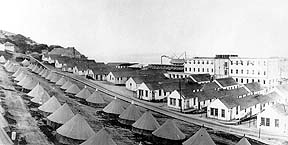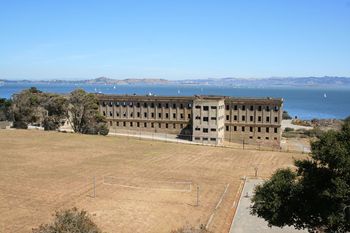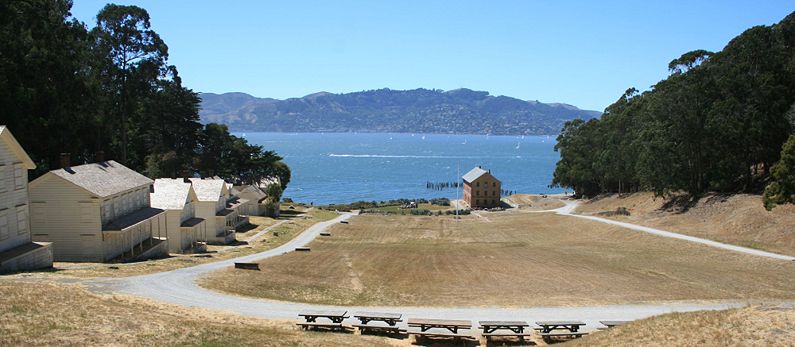Fort McDowell (1)
|
Fort McDowell (1) (1863-1946) - Established 12 Sep 1863 during the U.S. Civil War under the supervision of Col. René Edward De Russy, U.S. Army Engineers as Camp Reynolds on Angel Island, San Francisco County, California. The post was named after Maj. Gen. John Reynolds (Cullum 1084), although in contemporary records it is very often referred to just as Angel Island. The name was changed to Fort McDowell in 1900 after Gen. Irvin McDowell (Cullum 963) in 1900. Abandoned by the Army in 1946.
U.S. Civil War (1861-1865)Part of the Harbor Defense of San Francisco. Camp Reynolds was established on Angel Island in 1863 during the U.S. Civil War to defend San Francisco harbor. The initial survey of the island recommended three temporary earthen batteries at Point Knox, Point Stuart, and Point Blunt. Construction began in September 1863 on the batteries and was accompanied by the posting of Company B, 3rd U.S. Artillery to the island on 21 Sep 1863. The company commander, 2nd Lt. John L. Tiernon, named the new post Camp Reynolds after Maj. Gen. John Reynolds who was killed by a sniper at the Battle of Gettysburg in July 1862. Construction also began on the Camp buildings in 1863 but the majority were not completed until 1864. Construction on Battery Point Knox and Battery Point Stuart was completed in the summer of 1864 and the guns were mounted in both by the end of August 1864. Battery Point Blunt was plagued by difficulties that caused it to be abandoned in May 1865 and the guns removed in 1866. With the end of the U.S. Civil War, Camp Reynolds became a recruit and replacement depot furnishing units and replacements for operations throughout the west including the Indian wars.
Endicott Period (1890-1910)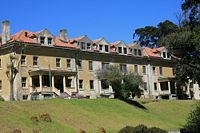 In 1900 Fort McDowell was established on the east side of Angel Island and three new Endicott Period batteries were accepted for service. Camp Reynolds became the west garrison of Fort McDowell and the official use of the Camp Reynolds name ceased. In addition to the coastal gun batteries construction, construction on the east garrison greatly expanded the capacity for troop processing necessitated by increasing troop deployments to overseas posts in the Philippines, Hawaii, and Guam. Some 126,000 troops had been discharged on Angel Island by 1907. A significant building program took place in 1910-1911 on the east garrison and the Headquarters was moved there.
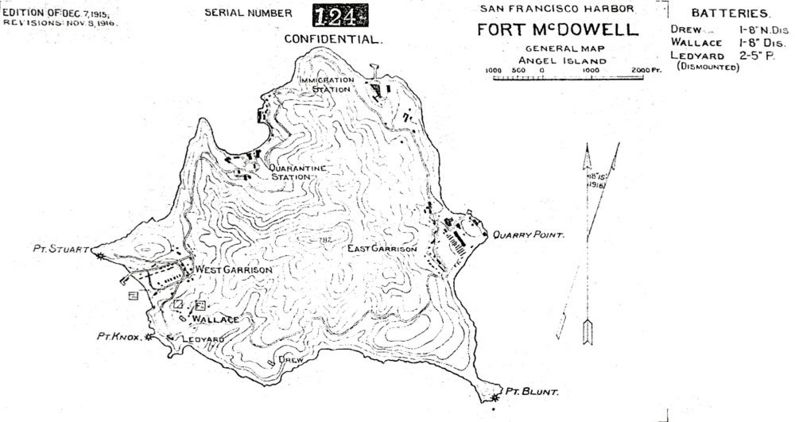 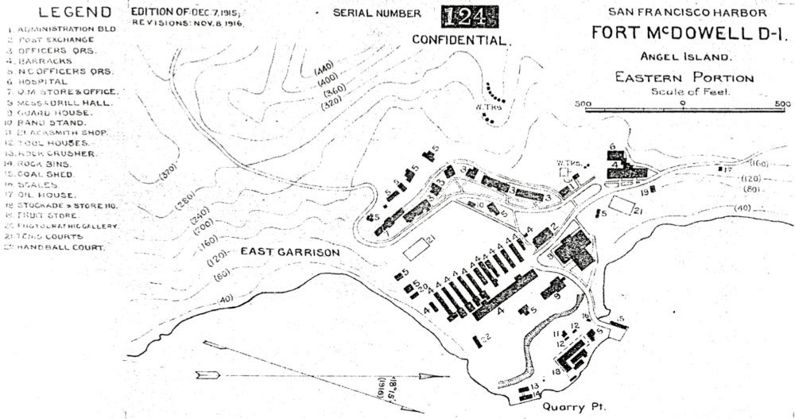 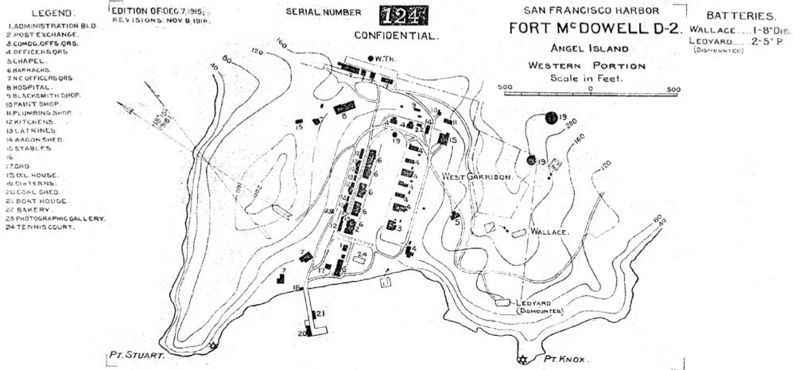 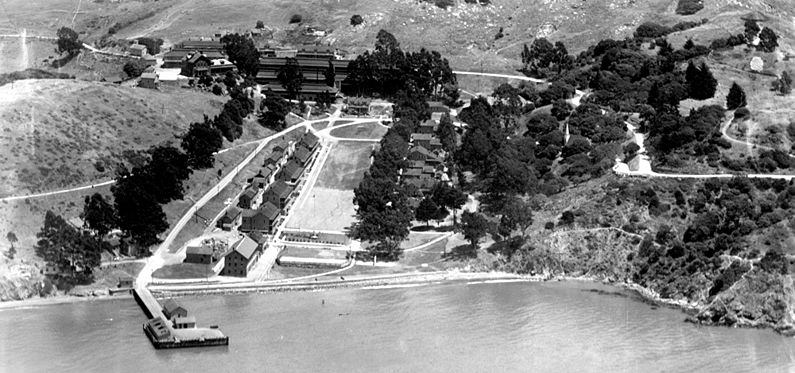
World War I (1917-1918)Fort McDowell continued its recruit depot roll for the western states during World War I and about 4000 men a month passed through the post. The post was severely overcrowded during this period and temporary barracks and tents were scattered over the island to handle the overflow. After the end of the war, it became the Overseas Discharge and Replacement Depot and processed about 22 thousand men a year. World War II (1941-1945)Fort McDowell was a part of the huge San Francisco Port of Embarkation during World War II and it not only processed outgoing and returning U.S. service personnel but also processed Japanese and German prisoners of war. After the end of the war, it processed the returning service personnel and discharged them. During World War II three Anti-Motor Torpedo Boat (AMTB) batteries were contemplated but were deferred as the outcome of the war became clear.
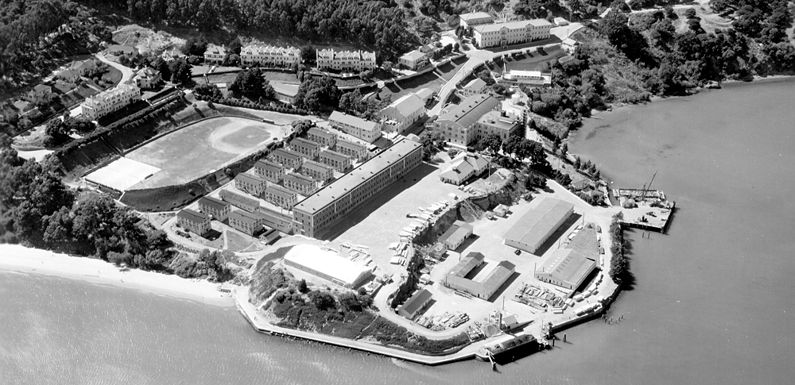
Cold War (1947-1991)The Army left Angel Island in August 1946 and declared the Island surplus. After lengthy debate part of the Island became a California State park in 1954. The Army also returned to the Island in 1954 to build a Nike anti-aircraft missile battery at Point Blunt. The Nike system became obsolete by 1962 and the Army again left Angel Island.
Current StatusThe entire island was declared a California State Park in 1963 and was opened to the public. Historic buildings at Camp Reynolds and Fort McDowell still stand and a restored officer's quarters is open to the public. All three Endicott Period gun batteries are open to the public but no period guns or carriages are in place. Access is by ferry from San Francisco or Tiburon.
Sources:
Links: Visited: 29 Aug 2009 | |||||||||||||||||||||||||||||||||||||||||||||||||||||||||||||||||||||||||||||||||||||||||||||||||||||||||||||||||||||||||||||
